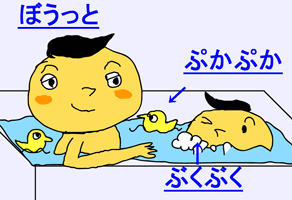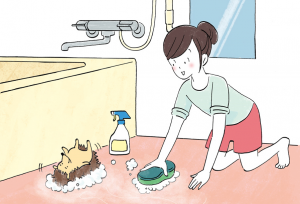You could say that there are a lot of onomatopoeia used in the Japanese language. How many of these do you know?
There must be a fair few of you out there who have heard the Japanese onomatopoeia for the bark of a dog (ワンワン), or the miaow of a cat (ニャーニャー).
So, how about 'にこにこ' and 'にやにや'?
Both are words to describe the appearance of someone smiling, but if used mistakenly the whole meaning of the text changes considerably.
A: 山田さんはいつもニコニコしています。
B: 山田さんはいつもニヤニヤしています。
Sentence A means something along the lines of 'Yamada-san always looks happy, and has a gentle, calm expression'. However, sentence B means 'Yamada-san is always smirking to himself over something. It's a bit creepy'. As you can see, the implications are quite different!
わたしは いつも ニコニコしています!
For learners of Japanese, no matter how advanced your level, these onomatopoeic words are difficult to get to grips with. However, if you become able to use them well, your Japanese will sound even more natural and fluent.
Below we'll introduce some sites where you can study onomatopoeia. Find one that you like, then you can start building up your vocabulary!
Now, some of the sites listed have explanations written in Japanese only. If you come across some kanji or words that you don't understand, it might be a good idea to use a tool such as Hiragana Megane (Introduction article) or Reading Tutor (Introduction article) as you read.
日本語を楽しもう! (Let's enjoy Japanese!) (Introduction article)
This is a site made by The National Institute for Japanese Language.
Explanations are in Japanese only, but the manga pages are very easy to understand and thus recommended.
Onomatopoeia are introduced in example sentences or conversations, meaning you can learn about their proper application in context.
早川乃梨子のオノマトペイント(The onomatopoeia picture drawn by Noriko Hayakawa. )(Introduction article)
This is a site that you can enjoy like a quiz game by guessing whether you got the answers right or not.
The soft touch of the drawings is nice, too.





